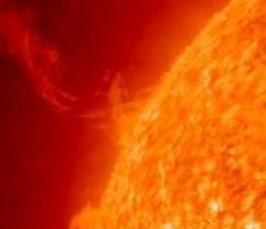ESP Online Seminar: Swirls and Alfvén pulses in the Solar Atmosphere (JiaJia Liu)
ESPOS
- Date: Sep 12, 2019
- Time: 11:00 AM - 12:00 PM (Local Time Germany)
- Speaker: JiaJia Liu
- University of Sheffield, Solar Physics and Space Plasma Research Centre
- Location: Plasma Dynamics Group, University of Sheffield (broadcasted at MPS)
- Room: Seminar rooms Aquila + Bootes
- Host: Andreas Lagg

Interest in the nature of swirling motions across the solar atmosphere has recently been considerably increased, as a plethora of these rather recondite have recently been widely observed. Preliminary studies suggest that these swirls may play a key role in channeling energy from the photosphere into the lower solar atmosphere, up to the low corona. Here, we will present our series of findings obtained by our newly-developed Automated Swirl Detection Algorithm (ASDA). ASDA is found to be very proficient at detecting swirls in a wide variety of synthetic data with various levels of noise. Applying ASDA to photospheric Hinode Solar Optical Telescope (SOT) observations with a pixel size of ~40 km, we found a total number of 1.62×105 swirls in the photosphere, with an average radius and rotating speed of ~290 km and ~1.0 km/s, respectively. About 70% of swirls are located in intergranular lanes. Most of the swirls have lifetimes less than twice of the cadences. Moreover, applying ASDA to simultaneous photospheric and chromospheric observations provides us new and appealing evidence that ubiquitous Alfvén pulses are excited by prevalent intensity swirls in the solar photosphere. Correlation analysis between swirls detected at different heights in the solar atmosphere supported by realistic numerical simulation show that, these prevalent Alfvén pulses propagate upwards through the solar atmosphere and reach the chromospheric layers. They are, therefore, found to be able to potentially carry the energy needed to sustain the temperatures of quiet regions in the upper chromosphere. Preliminary results from applying ASDA to a series of high-resolution Bifrost simulations show that more than 80% of photospheric velocity swirls are accompanied by strong local magnetic concentrations with maximum magnetic field strength above 300 G, and more than 70% of photospheric velocity swirls co-exist with magnetic swirls which rotate in the same direction. The above results suggest that the condition for the excitation of Alfvén pulses by photospheric swirls is indeed fulfilled.